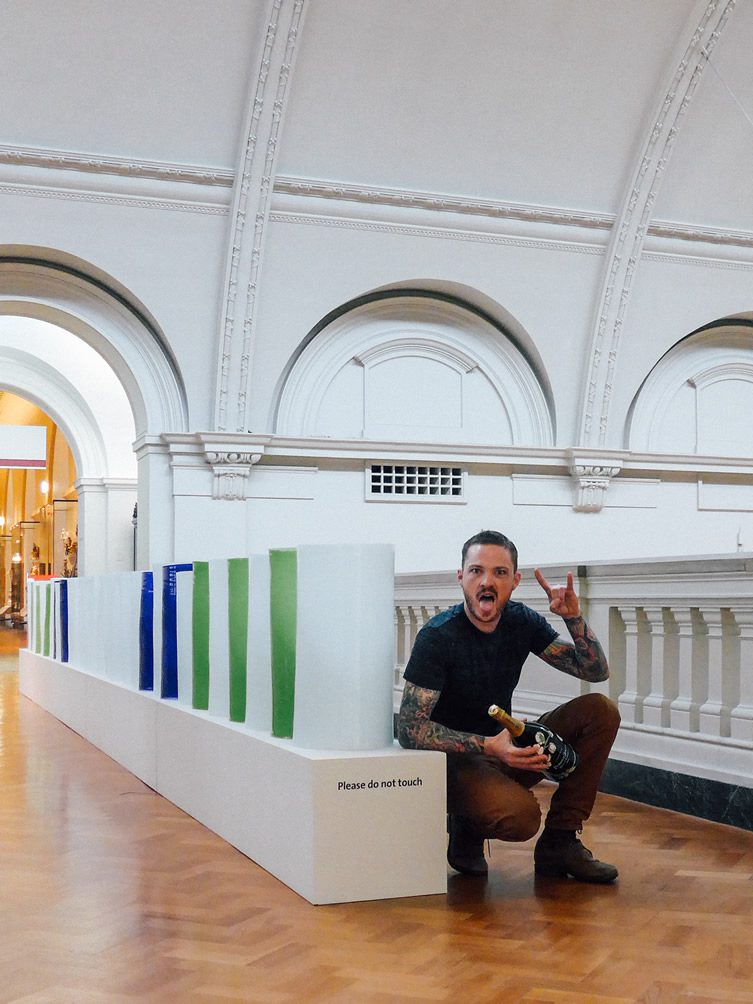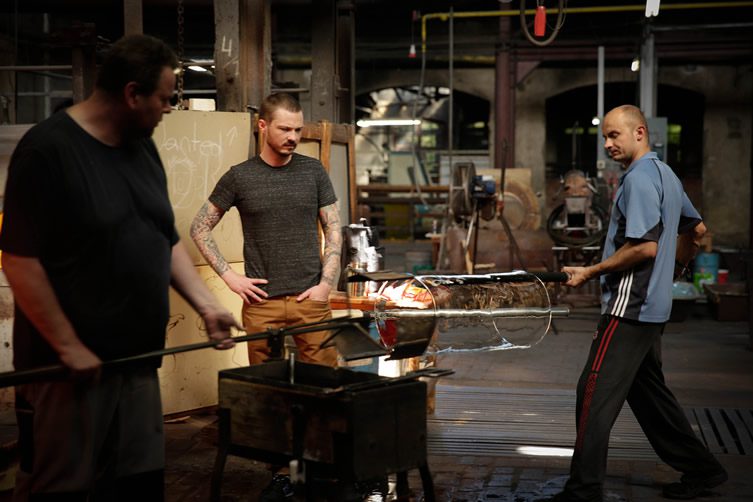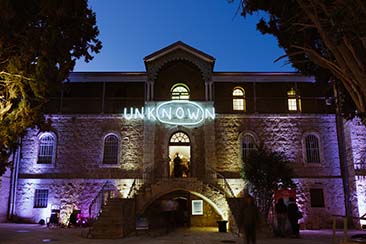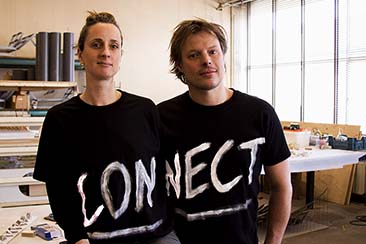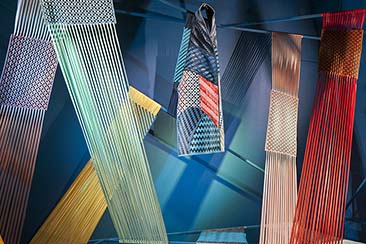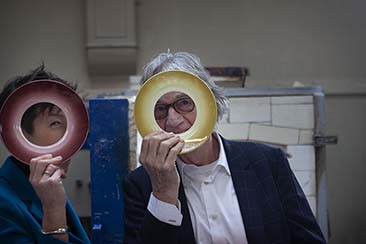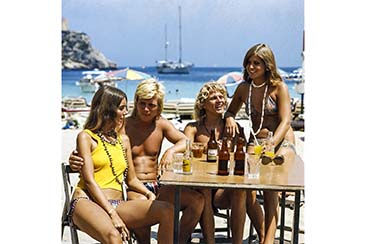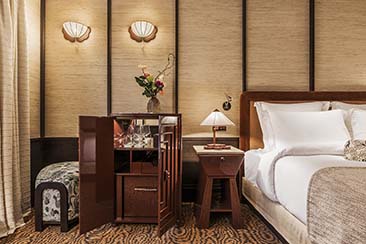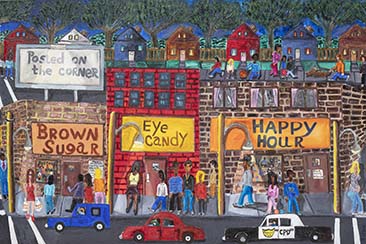Glass artist, craftsman and athlete (keep reading), Jeremy Wintrebert, launched his Human Nature installation at the Victoria and Albert Museum this weekend, as part of this year’s London Design Festival – commissioned by long celebrated champagne brand Perrier-Jouët, and bringing fresh blood to the ancient art of glassblowing (youthful, heavily tattooed, there is nothing ‘traditional’ about Jeremy).
Astounded by the beauty of glass in liquid form, a nineteen year-old (living out life as a young adult in the USA, following a childhood spent in West Africa) Wintrebert became fixated with the practise, only later discovering how physically demanding the process could be. Now living and working from his studio just outside Fontainebleau, south of Paris, Wintrebert’s endeavours with glass, nature and humanity continue. Sweat, blood and hospitals are behind him, and the artist is more determined than ever to pursue and push the boundaries of hand-blown glassmaking.
Work that is bold yet elegant, colourful, delicate and soaked in ethereal beauty; Jeremy recently adorned the Calvin Klein Madison Avenue flagship store with opalescent Clouds. In London, Wintrebert presents 120 brand new hand-blown cylinders in varying colours: some embodying Perrier-Jouët’s acid green, some opaque white, others royal blue. The installation explores the adaptation of our environments within nature and beauty. We sat down with Jeremy, to talk about the inspiration behind Human Nature, and how treating your body with athletic discipline is essential when tackling glass on such a large scale.
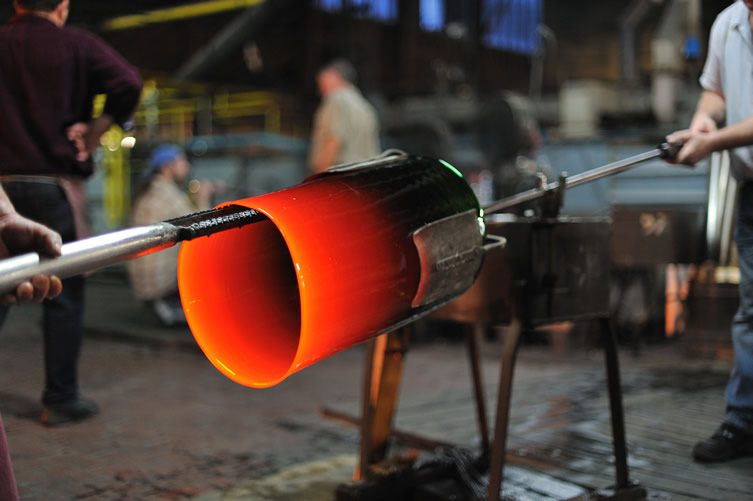
Human Nature in the making
So why glass? What made you fall for your chosen medium?
When I saw hot glass for the first time I was mesmerised by it. I was captivated by the way it moved, glowed and burned like a liquid fire. Frank Lloyd Wright described the material as solid light. There is something so amazing about trying to tame this mysterious and powerful energy, trying to pull shapes out of it while it cools down and solidifies. The technical challenge is also something that requires great focus, determination and practice, which I believe is a good way to learn humility and respect.
Can you describe your style in just three words?
Passion. Love. Adventure.
If there were one thing you could create with no restrictions in any form or any shape or size, what would it be?
I would love to do a huge installation of my Clouds in an airport. I don’t have many dreams but this is definitely one of them.
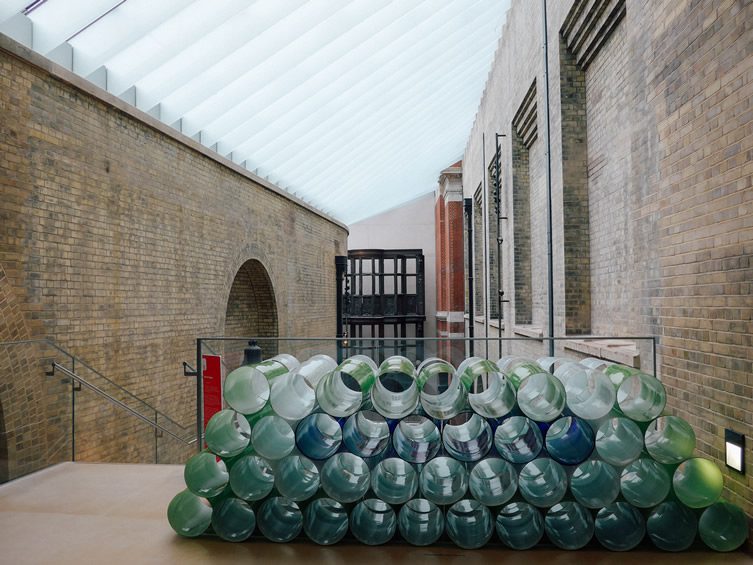
Photo © We Heart
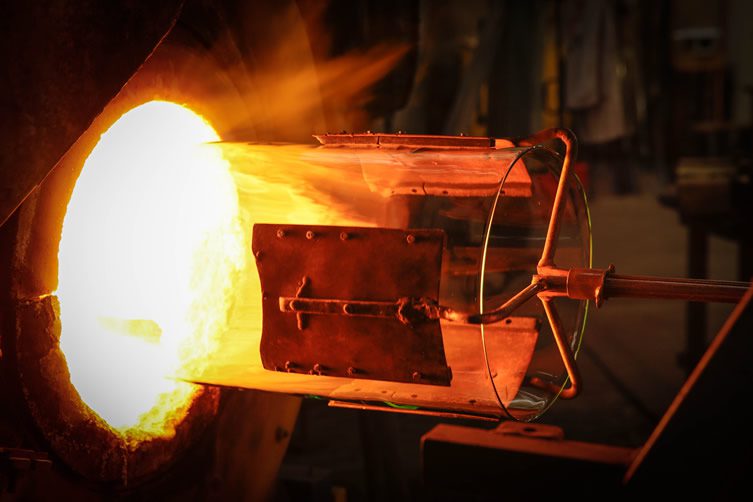
Human Nature in the making
Can you tell us a bit more about the process of creating your glass works? How difficult is glassblowing, forming and shaping?
The process is extremely technical and influences the creativity quite a bit. It is why I spent so much time learning and traveling all over trying to learn the language of glassblowing as best I could, so that I could express myself more freely. It is within this language that I go looking for different shapes and colours. I am of course very influenced by my experiences and my personal exploration, but my biggest influence is that back and forth with the material. I feel this conversation guides me through a dark room. Kind of like the light at the end of the tunnel.
In an interview with Freunde von Freunden, you describe yourself behaving like an athlete – due to the demanding nature of glassblowing. Can you elaborate on the physicality of your art?
Well I cannot speak for everyone I have worked with, but some of us do try to take good care of our bodies. I make very heavy work and it requires agility, coordination and strength so I try to eat well, exercise and take care of my body. But it is also a mental thing. Sometimes your mind is shot and tired so you have to dig deep within, knowing you can rely on your body to go beyond the pain and tiredness. You have to imagine these very big surface areas that are over 800 degrees, and constantly needing to be moved and turned. Once you start a piece you have to finish it – there are no breaks. But this is also why you need a great team and this I always do. I am really so grateful for all the people I have worked with because it is thanks to them that I am able to do what I do today.
BIG, Jérôme de Gerlache
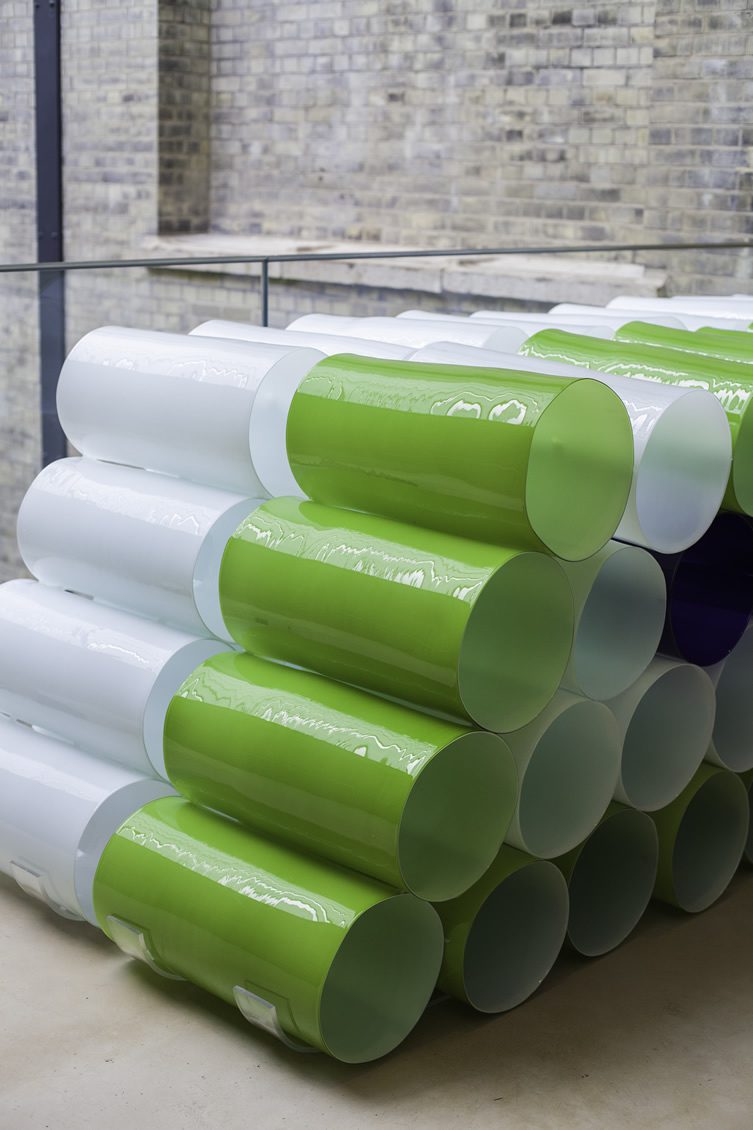
Photo, Adrian Fisk
How does one capture human nature in glass and how inspired by Perrier-Jouët and mankind were you when creating the installation?
The core of the Human Nature installations is exploring beauty within our instinctual needs to organise whatever spaces we are in. This relationship is obvious when it comes to survival like with shelter and food. As time goes on this is less and less obvious and more abstract with things like WiFi or plastics, which become so distant to what we could imagine as natural. But everything remains natural and is a consequence of this relationship. To see it today you can look at the dark side of our planet from afar and see all the light patterns around the globe, which represent our migrations and say a lot about how we have adapted to our environment.
Even though it is nuclear energy, it is still incredibly beautiful. So at first, I took these bold colourful cylinders into different environments and started instinctually stacking them as if they were pixels, and looking if I could explore that relationship on a graphic level which did not include survival or shelter but simply exploring beauty. The results have been very interesting. When approached by Perrier-Jouët to do this installation at the V&A I was invited to visit their Chateau, the Maison Belle Epoque which is the heart of the company. In the Maison I discovered the story of the Emile Gallé Art Nouveau bottle, the original Belle Epoque bottle design created in 1902 for the house, which is still used today. This whole period was driven and inspired to bring beauty to simple every day objects using nature as its main source of aesthetic inspiration.
At the V&A, the designated space is very linear and bear. Its color is very plain, so what stands out is the geometry of the architecture. Because the spirit of the Human Nature project is very organic and about relationships like these, I was inspired to design the installation the way I did. It will represent all of these ingredients as a sculpture, which will hopefully bring beauty to the space because beauty is after all what I am looking for in this artistic endeavour.
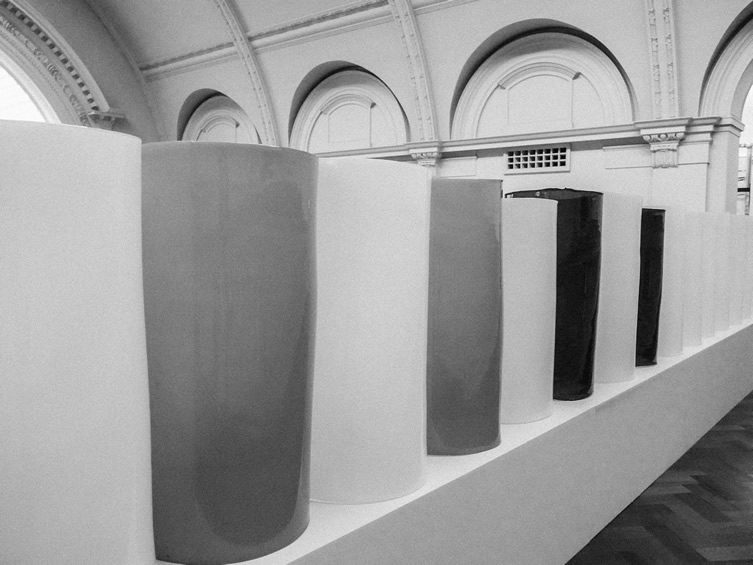
Photo © We Heart
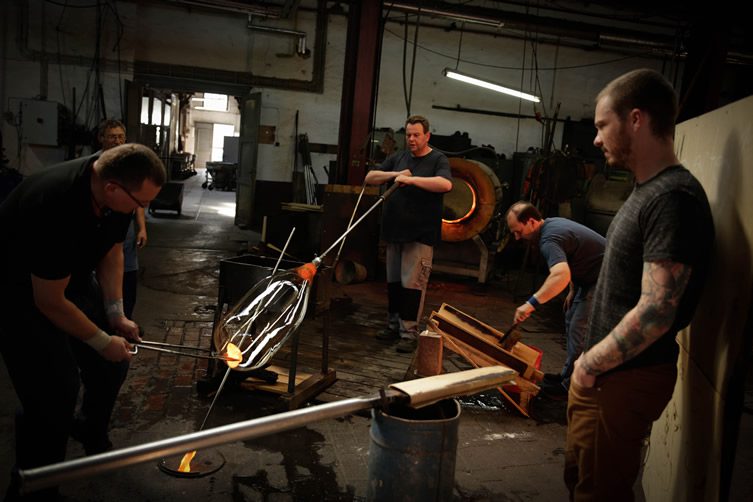
Human Nature in the making
In creating the pieces you stopped the process of window glass-making by keeping the cylinders as they were. Why did you choose to do this?
I stopped it because I simply fell in love with the cylinders. I found them incredibly beautiful.
What kind of support have you received in your career?
I have received support on so many levels it would take a novel to thank all that have contributed to my life so far. I would never be where I am if it wasn’t for the support of so many. I have not had an easy life and on top of that I have decided to pursue a very uncertain career.
When I watched the BIG video by Jérôme de Gerlache it made me wince. The amount of times the glass creations were dropped was heartbreaking. How do you deal with so much work and so much fragility?
I don’t really have to deal with it. Every time it’s a symbolic lesson for so many things and I try to accept it as is. Afterwards I usually come back stronger and even more determined. Three months before that video I was in a hospital bed fighting cancer with the doctors saying I would probably never be able to blow glass again.
Can you reveal to us your favourite place in your favourite city?
I don’t have a favourite place in a favourite city but I can tell you that my favourite place to be is in a Lake. Any Lake!
Human Nature by Jeremy Wintrebert for Perrier-Jouët will be at the V&A as part of the London Design Festival from 13-21 September.
@JWintrebert
@V_and_A
@perrierjouet
@L_D_F
***
